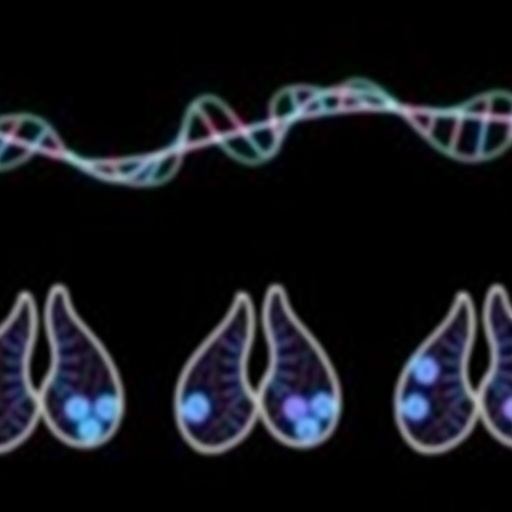The proto-oncogene MET has emerged as a pivotal factor in the progression of various solid tumors, with its alterations playing a critical role in tumor initiation, invasion, and metastatic dissemination. These genetic and molecular aberrations of MET manifest in several forms, including MET exon 14 skipping mutations (METex14), gene amplification, protein overexpression, and gene fusions. Each of these alterations impacts tumor biology differently, shaping both disease phenotype and therapeutic responsiveness, thereby underscoring the importance of MET as a therapeutic target across multiple cancer types.
METex14 mutations represent a distinct oncogenic driver in non-small-cell lung cancer (NSCLC) and have garnered significant attention due to their actionable potential. These mutations lead to skipping of exon 14, which encodes a juxtamembrane domain important for MET degradation, resulting in sustained receptor activation and oncogenic signaling. The identification of METex14 mutations has paved the way for the development and approval of targeted therapies such as MET tyrosine kinase inhibitors (TKIs), including capmatinib, tepotinib, and savolitinib, which have demonstrated substantial efficacy in advanced NSCLC harboring these alterations.
Beyond METex14, MET gene amplification and protein overexpression occur more frequently across various tumor types and are especially prominent as mechanisms of acquired resistance in cancers initially driven by other oncogenic alterations. The amplification and overexpression of MET amplify downstream signaling pathways that promote tumor cell proliferation, survival, migration, and invasion. Clinically, MET amplification and overexpression often predict sensitivity to MET-targeted therapies, although the heterogeneity of these alterations poses challenges in patient stratification and treatment optimization.
.adsslot_LWzDFburKo{width:728px !important;height:90px !important;}
@media(max-width:1199px){ .adsslot_LWzDFburKo{width:468px !important;height:60px !important;}
}
@media(max-width:767px){ .adsslot_LWzDFburKo{width:320px !important;height:50px !important;}
}
ADVERTISEMENT
The treatment landscape for MET-altered cancers is rapidly evolving, moving beyond classical TKIs towards a diversified arsenal of therapeutic agents. Emerging evidence supports the efficacy of novel modalities including anti-MET monoclonal antibodies, bispecific antibodies, and MET-directed antibody–drug conjugates (ADCs). These agents offer alternative mechanisms to disrupt MET signaling, binding extracellular domains or delivering cytotoxic payloads specifically to MET-expressing tumor cells. This multifaceted approach aims to circumvent resistance mechanisms and improve clinical outcomes, especially in patients with resistance to TKIs or those whose tumors exhibit MET overexpression rather than mutation.
A landmark advancement in this therapeutic expansion occurred in May 2025 with the U.S. Food and Drug Administration (FDA) approval of telisotuzumab vedotin, a MET-directed ADC indicated for patients with previously treated advanced-stage nonsquamous NSCLC exhibiting high MET expression (≥50% of tumor cells with 3+ immunohistochemical staining). This ADC combines a monoclonal antibody targeting MET with a microtubule inhibitor payload, harnessing selective delivery of chemotherapy to MET-overexpressing cells, thereby minimizing systemic toxicity and enhancing antitumor activity.
Understanding the distinct adverse event profiles associated with various MET-directed therapies is becoming increasingly important in clinical practice. For MET TKIs, common toxicities include peripheral edema, nausea, and elevated liver enzymes, reflecting the on-target effects of MET inhibition in normal tissues. Conversely, MET-directed ADCs share toxicity characteristics with other conjugates, such as hematologic suppression and neuropathy, arising from the payload component. Early recognition and management of these toxicities are critical to maintain treatment adherence and optimize therapeutic benefit.
The heterogeneity of MET alterations among solid tumors necessitates robust diagnostic strategies to accurately identify patients who may benefit from MET-targeted therapies. Techniques such as next-generation sequencing (NGS), fluorescence in situ hybridization (FISH), and immunohistochemistry (IHC) are employed to detect METex14 mutations, gene amplifications, and protein overexpression, respectively. The integration of these assays into routine diagnostics expedites patient selection, ensuring personalized approaches that align with the molecular landscape of the tumor.
Crucially, MET alterations are not restricted to NSCLC but extend to other malignancies, including gastric, colorectal, hepatocellular carcinoma, and glioblastoma, albeit at varying frequencies. This broad distribution implies that therapeutic strategies targeting MET could transcend lung cancer, offering new hope for patients with MET-driven tumors in diverse anatomical and molecular contexts. Current investigations are exploring the efficacy of MET inhibitors and ADCs across these cancer types, aiming to expand the therapeutic arsenal beyond its current indications.
Resistance mechanisms to MET-targeted therapies present another formidable hurdle in clinical management. Tumor cells may acquire secondary mutations in MET that diminish TKI binding or activate alternative signaling pathways, undermining treatment efficacy over time. Combination strategies pairing MET inhibitors with agents targeting parallel pathways or immune checkpoint inhibitors are under active investigation to overcome resistance and sustain durable responses.
From a molecular standpoint, MET functions as a receptor tyrosine kinase that binds hepatocyte growth factor (HGF), initiating signaling cascades such as RAS-RAF-MEK-ERK and PI3K-AKT-mTOR, which regulate cellular proliferation, survival, and motility. Alterations that lead to constitutive MET activation hijack these pathways, fostering oncogenesis. Targeted inhibition disrupts this pathogenic signaling, reaffirming the vital role of MET in cancer biology and its promise as a therapeutic target.
The dynamic interplay between MET-driven oncogenesis and the tumor microenvironment also merits attention. MET signaling contributes to angiogenesis and modulates immune cell infiltration, factors that influence tumor progression and response to therapy. Innovative treatment paradigms combining MET-targeted agents with anti-angiogenic drugs or immunotherapies may exploit these interactions to enhance clinical efficacy.
In summary, the therapeutic targeting of MET has transitioned from a niche focus in lung cancer to a burgeoning frontier across multiple solid tumors. Advances in molecular diagnostics, novel drug modalities, and an expanding understanding of resistance mechanisms collectively inform a more nuanced approach to MET-altered cancers. As the clinical toolbox grows, the challenge will be to tailor therapies based on the specific MET alteration and tumor context, maximizing patient benefit while minimizing toxicity.
Looking forward, ongoing clinical trials and translational research continue to illuminate the complexities of MET biology and its therapeutic vulnerabilities. Real-world evidence will be indispensable in refining patient selection criteria, optimizing combination regimens, and managing adverse events. The ultimate goal remains to harness the full potential of MET targeting, transforming outcomes for patients with MET-driven malignancies across oncology.
The approval of telisotuzumab vedotin represents both a milestone and a catalyst in the field of MET-directed therapeutics. Its success exemplifies how antibody–drug conjugates can effectively exploit overexpressed oncoproteins to deliver precise cytotoxic therapy. This model is likely to inspire further innovations, including next-generation ADCs and bispecific constructs, broadening the scope of MET-targeted interventions.
With the expanding array of MET-directed interventions, clinicians and researchers must remain vigilant to the nuances of each therapeutic class. Comprehensive assessment of pharmacodynamics, resistance patterns, and toxicity profiles will inform rational sequencing and combination strategies. Such multidimensional approaches promise to elevate the standard of care for patients harboring MET alterations beyond current paradigms.
In conclusion, MET’s evolving role as a therapeutic target underscores the convergence of molecular oncology, drug development, and clinical innovation. The insights gleaned thus far embolden ongoing efforts to integrate MET-targeting agents into personalized cancer treatment frameworks, heralding a new era in the management of NSCLC and a spectrum of other solid tumors where MET aberrations are paramount.
Subject of Research: Therapeutic targeting of MET alterations in non-small-cell lung cancer (NSCLC) and other solid tumors
Article Title: Evolving roles of MET as a therapeutic target in NSCLC and beyond
Article References:
Lee, J.B., Shim, J.S. & Cho, B.C. Evolving roles of MET as a therapeutic target in NSCLC and beyond.
Nat Rev Clin Oncol (2025). https://doi.org/10.1038/s41571-025-01051-9
Image Credits: AI Generated
Tags: advanced lung cancer treatmentsMET exon 14 mutationsMET gene amplification in cancerMET proto-oncogeneMET tyrosine kinase inhibitorsmetastatic dissemination mechanismsNSCLC targeted therapiesoncogenic drivers in solid tumorsprotein overexpression in tumorsresistance mechanisms in cancer therapytherapeutic role of METtumor biology and therapy





